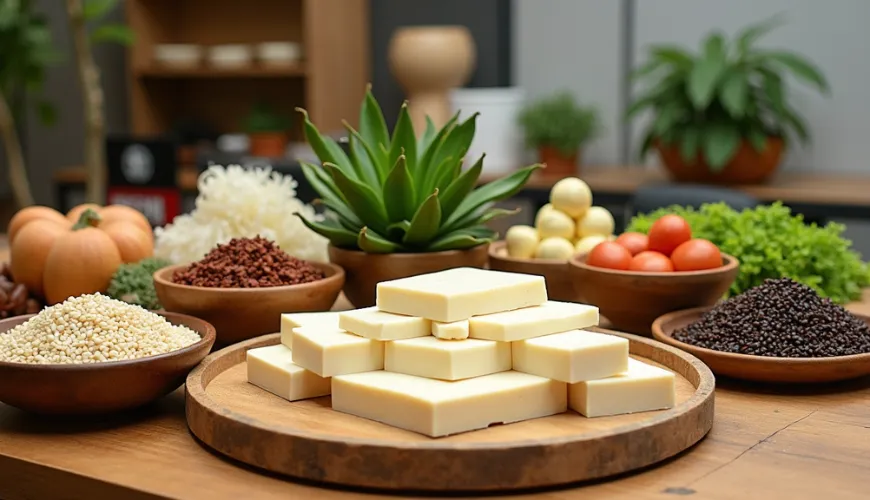
What does sansho offer you in the field of gastronomy and health?

Sansho - The Japanese Spice That Changes the Game in Both Kitchen and Healthy Lifestyle
When you mention Japanese spices, most people think of wasabi or soy sauce. However, traditional Japanese cuisine is much more diverse—and one of its lesser-known yet intriguing treasures is sansho (Japanese 山椒, pronounced "san-sho"). This aromatic plant from the Rutaceae family is commonly used in Japan much like pepper is used in the West, but its flavor profile and effects are completely unique. Sansho is not only a spice but also a component of traditional medicine and is increasingly appearing in modern cuisine and cosmetics.
What is Sansho and What Does It Taste Like?
Sansho comes from the fruits of a shrub or small tree called Zanthoxylum piperitum, which grows mainly in Japan, Korea, and China. Similar to its Chinese relative—Sichuan pepper—sansho has a lemony fresh, mildly woody flavor with a unique property: it causes a mild tingling sensation on the tongue. However, this is not the heat we know from chili peppers. Sansho acts more like a light numbing that surprisingly enhances the taste of food without overpowering it.
In Japan, both the dried ground peel of the fruit (known as "kona-zansho") and whole dried berries are used, often added to sauces or marinades during cooking. Fresh sansho leaves, called "kinome," are used as an aromatic garnish for traditional dishes, especially in spring.
A Spice with Benefits Beyond the Plate
What makes sansho truly exceptional is not only its distinctive flavor but also the numerous health benefits it offers. In traditional Japanese and Chinese medicine, sansho has been used for centuries—allegedly stimulating digestion, alleviating stomach pain, and improving blood circulation. Modern research has confirmed that it contains compounds like sanshool, which have anti-inflammatory, antibacterial, and analgesic properties.
It's no wonder that sansho is gaining attention not only in the culinary world but also in cosmetics and natural health care. Extracts from this plant appear in products like creams for sensitive skin, as they softly soothe irritation and improve microcirculation. Some studies even suggest that sansho may have antioxidant effects, helping to protect the body from oxidative stress.
In everyday cooking, sansho has various uses in both savory and sweet dishes. In Japan, it is added to the spice blend "shichimi togarashi," used to season noodles, soups, or rice. In Europe, sansho is slowly making its way into modern bistros and fine dining restaurants, where chefs use it to flavor fish, vegetable dishes, or even desserts and chocolate.
Modern Bistro and a Touch of Japan
In a Brno bistro focused on fermented cuisine, sansho appeared as part of a marinade for smoked tempeh. Combined with miso paste, maple syrup, and garlic, it created an incredibly complex flavor reminiscent of umami, citrus, and a mild pungency. Customer reactions? "I've never eaten anything like this, but I want it again." Such is the power of sansho—a subtle yet distinctive spice.
Why Sansho Should Not Be Missing in an Eco-Friendly Household
At a time when more and more people are seeking natural alternatives to chemical additives, sansho presents itself as an attractive option. Not only does it have a unique flavor, but it also offers benefits that align with a healthy lifestyle. Combined with other organic ingredients—such as fermented foods, tofu, or whole grains—it supports digestion and the body's natural defenses.
Moreover, sansho as a raw material is environmentally friendly. Growing this plant does not require intensive chemical sprays, and as a traditional Japanese crop, its cultivation often takes place on small family farms. By choosing certified organic sansho, you support not only your health but also ethical and sustainable production.
How to Incorporate Sansho into Your Daily Diet
There are plenty of options. You can start simply—sprinkle grilled vegetables with a pinch of ground sansho and olive oil. It also works great as a seasoning in dressings, marinades, or spreads. If you like baking, try adding a pinch of sansho to chocolate cookies—the citrus note will give sweet pastries an unexpected depth.
If you enjoy Asian cuisine, sansho pairs well in ramen broths, with fish, seafood, or tofu. Fermentation enthusiasts can add it to kimchi or homemade pickles—not only will it enhance the flavor, but it will also support preservation.
Be Cautious with Dosage—Less is More
One important tip: don't overdo it with sansho. It is highly aromatic, and its tingling sensation on the tongue can be unpleasant for some at higher doses. Start with a small amount and gradually find what suits you. Thanks to its potency, even a small bag will last you a long time.
Where to Buy Sansho?
In the Czech Republic, sansho is still a relatively rare spice, but it can be found in specialized health food stores, eco-friendly product shops, or online stores focused on Japanese foods. It is ideal to look for organic certified variants that guarantee environmental friendliness and quality processing without chemical additives.
At Ferwer.cz, you can find sansho as part of a broader selection of natural foods and spices that support a healthy lifestyle and a sustainable approach to cooking.
"Food should not just be fuel, but an experience for all the senses." – These words from Japanese chef Yoshihiro Murata perfectly capture the philosophy that sansho brings.
Whether you're an experienced chef looking for new flavors or a consumer wanting to eat healthier and in harmony with nature, sansho offers a unique way to enrich your diet and daily rituals. It may well become your new secret ingredient—small, inconspicuous, yet with a big impact.

